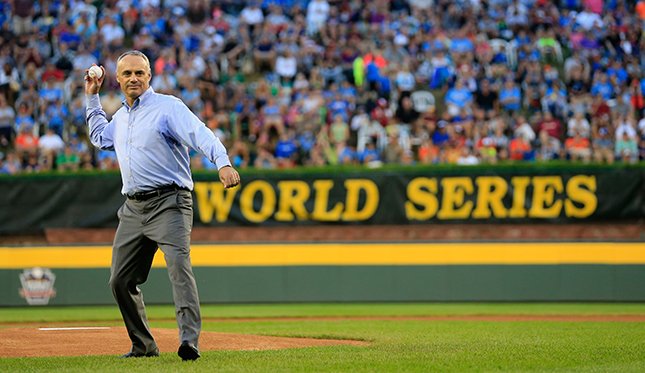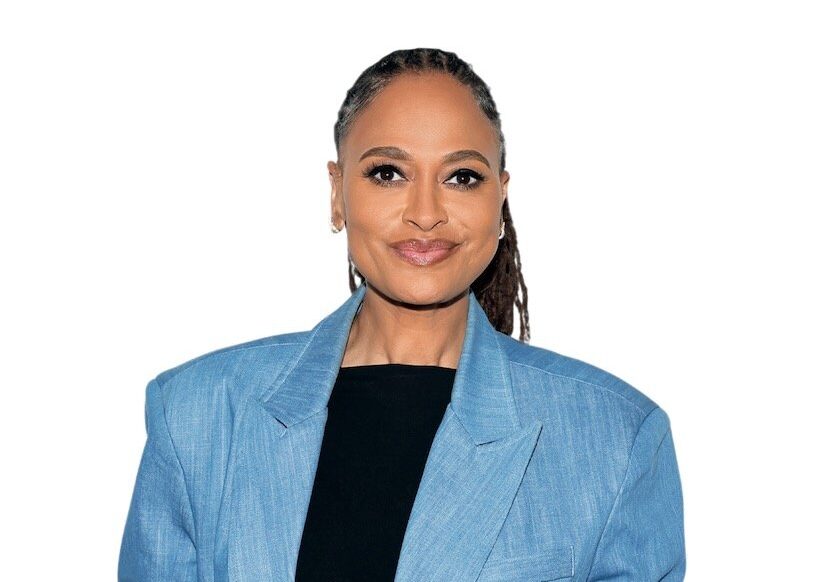Contrary to what you might have heard, the national pastime may be more profitable today than it’s ever been. Last year was a record-setter, with Major League Baseball revenue flying past $10 billion for the first time, up from around $9.5 billion in 2015. Ratings for local broadcasts were strong, and ESPN’s flagship Sunday Night Baseball broadcast saw its viewership rise 10 percent. Meanwhile, team values continue to climb, with Forbes reporting the average value of a baseball team in 2017 at $1.54 billion, a 19 percent increase over the previous year.
Much of the credit for this growth goes to Rob Manfred, the MLB commissioner since 2015. Manfred graduated from Cornell and Harvard Law with a focus on labor relations before joining Major League Baseball during collective bargaining negotiations in the late 1980s. He rose to chief operating officer of the MLB at the end of the 2013 season and in 2014 was elected by owners to succeed Bud Selig as commissioner. Manfred has helped forge generally tranquil relations with the players union and benefitted from the fact that baseball doesn’t have the safety risks associated with sports such as hockey and football. But that’s not to say there haven’t been challenges. Manfred has had to navigate the removal of the Cleveland Indians’ racist “Chief Wahoo” logo and handle growing buzz about the long duration of games and whether a conservative sport such as baseball can thrive in the era of fast-paced social media and audience fragmentation. Worth recently spoke with Manfred about the art of negotiation, how to deal with doping and what kids really think about baseball.

Q: The MLB had record revenue last year, and viewership was up as well. What’s behind this growth?
A: The key for us in terms of increasing revenue is the quality of our product and our content. We’ve been very fortunate the last two years to really have compelling postseasons with the Cubs’ victory over Cleveland and the Dodgers vs. Astros World Series last year—just great finishes. Most important, we’ve had more really talented young players entering the game in the last three to five years than at any time in decades.
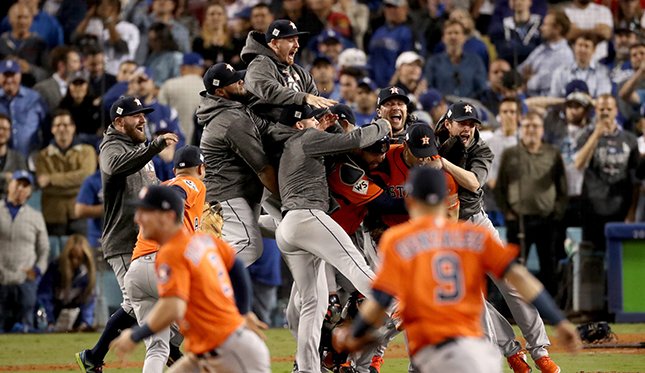
What’s causing this influx of talent?
It’s hard to know. We have in the last seven or eight years devoted a lot more attention to youth participation. In general that focus on young people is broad, big-pipe participation, just to get as many people to play the game as possible, because it’s the best way to build fans. But obviously, to the extent that you get more people playing, you’re more likely to attract great athletes. It’s just a numbers game.
“People keep writing that baseball is dying, yet our business flourishes, our ratings improve, our revenues go up.”
There’s this drumbeat in the sports press that baseball is struggling, the games are too long, it’s a dying sport. But the numbers don’t support this thesis. So why the perception?
This is a theme that’s been out there forever. People keep writing that baseball is dying, yet our business flourishes, our ratings improve, our revenues go up. It’s just a hard notion to disavow. But baseball enjoys a unique place in American culture. No other sport has legitimately ever been referred to as the national pastime. But entertainment alternatives have emerged, other leagues, other sports, so it comes from this mind-set that, “Gee, it’s not like it used to be.” I’d point out to you, just in terms of who’s going to have the next generation of fans, across all sports the research shows the best way to create new fans is to get more kids to play the game. The only major sports, including soccer and all the ones people talk about, that have had an increase in youth participation are baseball and softball.

Why do you think baseball has an advantage in terms of youth participation?
There are two things about our sport that are really appealing. It’s generally a very, very safe sport, and our sport does teach inherently American values, things like teamwork and persistence, in a way that a lot of other sports don’t.
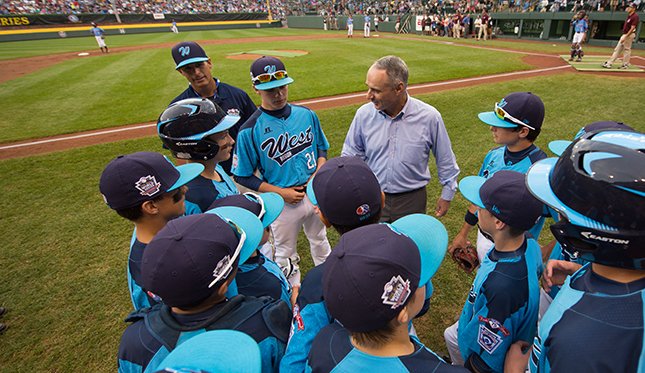
But there are a lot of team sports that emphasize these values. How’s baseball different from something like football or basketball?
Think about success in our sport: The best hitter gets a hit one out of every three times. If a quarterback misses one out of three passes, he’s not successful. Ours is a very difficult sport, and there is a mental toughness to our sport that is very different. The second big difference is a challenge in marketing our players. Our sport is about teams. Just think about a broadcast. No individual player is on the screen for that much of a broadcast the way a quarterback or a star player in the NBA would be, with the possible exception of a pitcher who throws a no-hitter.
In the off-season you were able to orchestrate the removal of the Cleveland Indians’ “Chief Wahoo” logo from their uniforms, while the NFL has failed to change the name of the Washington Redskins. How did you approach this negotiation?
I did not approach it from the perspective of a negotiation. I really approached it from the perspective of a conversation with Paul Dolan, the principal owner. It was clear and became even more clear during the World Series in 2016 that this was an issue that was attracting attention. We had some litigation in Canada during the playoffs. When you get a situation where you have potential for a playoff game in Toronto being enjoined, I was able to make a persuasive case to Paul that this was not an Indians-only issue and a Cleveland-only issue. It becomes a league issue, and there is an obligation to the other 29 teams before you have some sort of a crisis.
Cleveland is hosting the All-Star Game this year. Was that part of the agreement?
There was no quid pro quo. That had been planned years ago. It was literally a conversation about doing what’s best for the league and doing it in a way that was not harmful for the individual franchise. And to Paul Dolan’s credit, I wanted to have a conversation about how to deal with this, and that conversation was successful because he was receptive to having it.
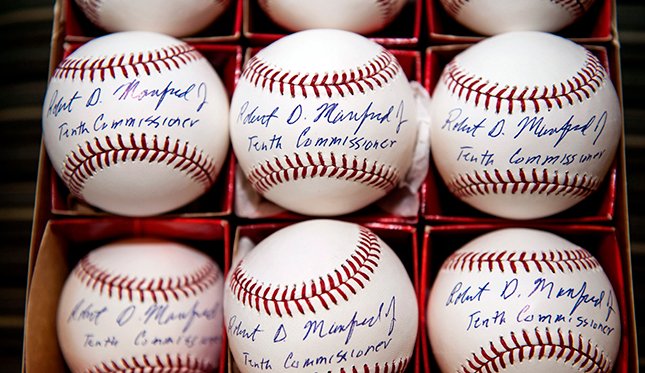
You’ve worked with the MLB in one capacity or another since the late 1980s, through the steroid era, up to the present. There have been shocking revelations about Russian state- sponsored doping in global sports and the Olympics. As someone at the head of a sport that had to deal with this issue, how do you think this latest doping scandal should be handled?
First of all, the fans, the public, are really concerned about the issue of doping because a sport is only appealing when it has integrity. People have to believe that when they’re devoting all of this time and money to the sport that it is fair. In sports, particularly in professional sports, you have to accept the fact that there is always going to be a temptation to use performance-enhancing drugs. It’s not a problem that can be subject to some sort of final answer. It’s never quite done. But I think transparency is crucial. The biggest incentive, bigger than any penalty—monetary or suspension—is being outed. It’s the worst kind of penalty for an athlete.
Running a league means managing a lot of big personalities—players, unions, owners—with a lot of competing priorities. How do you approach the management challenges of being a commissioner?
There’s a whole line of thinking in management literature that leadership is essentially a political process. I do believe that is particularly true in the context of a professional sports league. The key to politics is developing an understanding with various constituencies that on some level you have their interests at heart. Once you convince people of that, you can get over an individual issue or set of issues where it may not appear that you’re on the same page. They bear with you because they understand that, over the long haul, you have their interests at heart.

